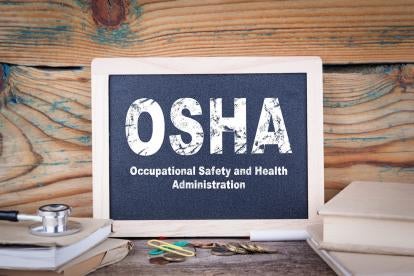Compliance with the myriad Occupational Health and Safety Administration (OSHA) requirements applicable to specific industries and activities continues to present challenges to business of all sizes. As an OSHA-regulated entity, this is no news flash. OSHA inspections are, unfortunately for many regulated industries, an inevitability – as is the follow-up enforcement activity, including the issuance of a citation and assessment of penalties, when OSHA inspectors identify violations of applicable requirements.
With the recently increased maximum penalties applicable to OSHA violations (approximately 2.5% over 2018 maximum penalty amounts), regulated entities are well served to proactively evaluate, and correct any noted deficiencies in, their compliance programs relative to requirements that comprise the agency’s regulatory enforcement priorities. Even when not explicitly defined as an enforcement priority, OSHA has intimated, through published guidance and compliance directives, that certain programs are the subject of agency enforcement focus. For example, consistent with past years, OSHA has again published the “Top 10 Most Frequently Cited Standards” (for Fiscal Year 2018); entities that are subject to these particular standards may use this list and prioritize internal programmatic reviews to ensure compliance protocol are being properly implemented. OSHA’s National Emphasis Programs and Local Emphasis Programs, which outline enforcement priorities specific to certain industries and activities, can also serve as helpful guidelines for regulated entities who wish to proactively assure compliance with regulatory requirements that OSHA deems to be of the highest priority.
More injury and illness data is readily available to OSHA enforcement staff for use in prioritizing inspections and other enforcement activities than ever before. Regulated entities operating establishments with the most elevated rates and numbers of injuries and illnesses can expect OSHA inspections as part of the agency’s Site-Specific Targeting program, which characterizes high-priority establishments (for inspection purposes) based on injury and illness data reported pursuant to OSHA’s Electronic Reporting Rule. If and when an OSHA inspection occurs, employers should expect that OSHA enforcement staff will focus on, among other applicable requirements, the emphasis programs and the most frequently cited standards discussed above. OSHA inspectors might also request to review the operations and activities that were the subject of the previously reported injuries and illnesses.
To the extent an OSHA inspection leads to an enforcement action, including the issuance of a citation and notice of penalty, a timely response is critical. Whether through an informal settlement conference or formally contesting the citation through administrative procedures, or both, the classification of citations and the potential future consequences that might result if the same violations are observed can add significant risk to future operations, particularly if abatement measures are not properly negotiated. While quickly resolving a citation by way of an informal settlement can be attractive in many scenarios, employers should be wary of agreeing to an unsupported classification of a particular violation, which can become the predicate of hefty repeat violation penalties at a later date.





 i
i

